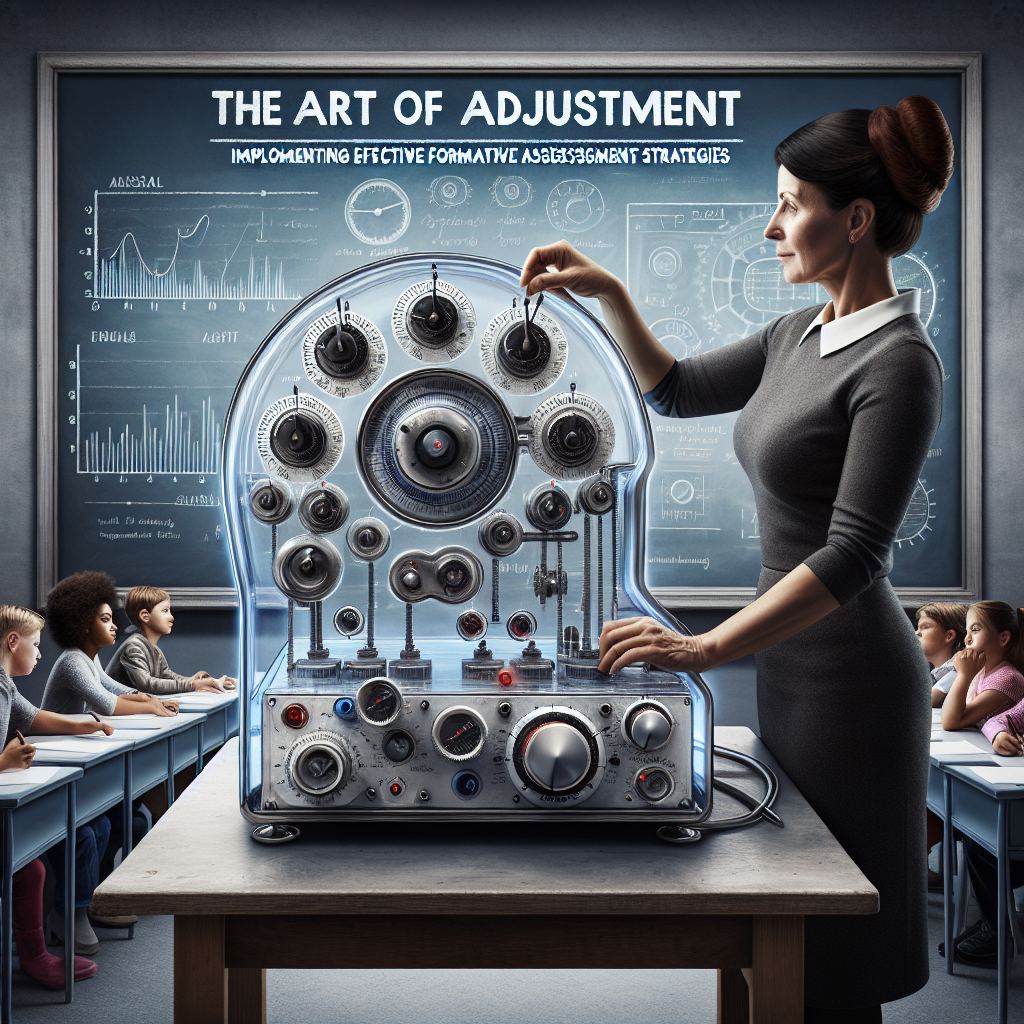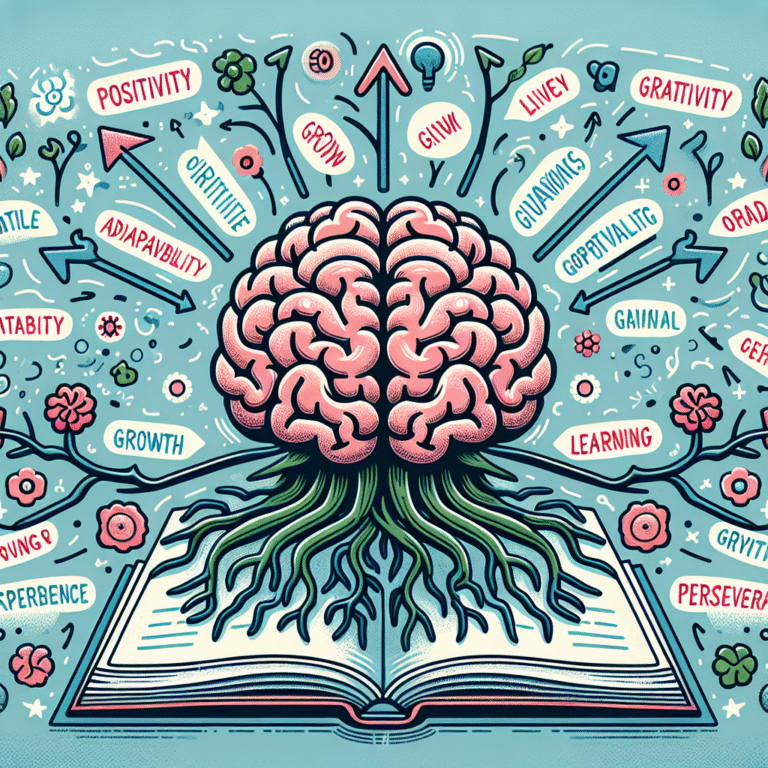
Introduction
In the rapidly evolving landscape of education, the ability to adapt and respond to student needs is more critical than ever. The era of one-size-fits-all learning is behind us, making way for personalized approaches that capitalize on individual strengths and address specific challenges. As educators, we must embrace The Art of Adjustment: Implementing Effective Formative Assessment Strategies to foster an environment where students not only thrive academically but also develop a love for learning. This article delves into the nuances of formative assessments, exploring strategies that empower educators to make informed adjustments tailored to their classrooms.
Understanding Formative Assessment
What is Formative Assessment?
Formative assessment refers to a range of evaluative tools and approaches that educators employ to gather ongoing insights about student learning. Unlike summative assessments, which typically occur at the end of a learning cycle, formative assessments are conducted throughout the instructional process. The primary goal is to enhance learning by providing feedback that can inform teaching strategies.
Importance of Formative Assessment
Formative assessment serves as a powerful tool for educators. According to Hattie and Timperley (2007), two critical factors influence student achievement: feedback and the ability to adjust instruction based on that feedback. Herein lies The Art of Adjustment: Implementing Effective Formative Assessment Strategies; it enables teachers to recognize when students struggle, intervene timely, and ultimately enhance learning outcomes.
Key Components of Formative Assessment Strategies
- Ongoing Feedback: Providing real-time responses to student work.
- Flexibility: Adapting teaching strategies based on student performance.
- Learning Goals: Establishing clear, measurable objectives for student progress.
- Peer Engagement: Involving students in self-assessment and peer feedback.
Implementing Formative Assessment Strategies
Creating a Feedback-Rich Environment
The first step in implementing effective formative assessment is fostering a feedback-rich classroom environment. By establishing practices that encourage open communication, students feel empowered to engage in their learning process.
Case Study: The Power of Peer Assessment
At Lincoln High School, teachers initiated a peer assessment protocol in their English classes. Students were taught to provide constructive feedback using a structured rubric. The result was astounding; not only did student writing improve significantly, but the collaborative atmosphere led to heightened engagement and deeper discussions of literary concepts.
Analysis: This case study highlights how peer assessments can serve as both a formative assessment tool and a means to cultivate community within the classroom, illustrating The Art of Adjustment: Implementing Effective Formative Assessment Strategies.
Utilizing Technology for Real-Time Feedback
In today’s digital age, technology offers innovative ways to implement formative assessments effectively. Tools like Google Forms, Kahoot!, and Nearpod can enhance the assessment process by providing immediate feedback.
Case Study: Instant Feedback with Kahoot!
A middle school in Dallas used Kahoot! to gauge student understanding of algebra concepts. The interactive quizzes allowed teachers to view which questions were most challenging for students in real-time. Consequently, they could address misunderstandings on the spot.
Analysis: Integrating technology into formative assessments increased engagement and allowed educators to adjust instructions dynamically, showcasing The Art of Adjustment: Implementing Effective Formative Assessment Strategies via practical applications.
Differentiating Instruction Through Formative Assessment
To meet the diverse needs of students, educators must leverage formative assessments to inform differentiated instruction. By understanding the strengths and weaknesses of each student, teachers can tailor their approaches effectively.
Case Study: Tailored Math Instruction
At Harmony Elementary, teachers used formative assessments to create small groups based on student performance in math. Those struggling with specific concepts received targeted interventions, while advanced learners engaged in enrichment activities.
Analysis: This case emphasizes the necessity of differentiation informed by formative assessment data. Such adaptive strategies exemplify The Art of Adjustment: Implementing Effective Formative Assessment Strategies in action.
The Role of Student Self-Assessment
Empowering students to self-assess is crucial in fostering a culture of ownership over their learning. Self-assessment encourages reflection, critical thinking, and an understanding of personal learning journeys.
Case Study: Student-Centered Reflections
In a Massachusetts classroom, students engaged in weekly self-assessment activities. They reflected on their learning goals and identified areas for improvement. This practice resulted in increased metacognition and accountability in learning.
Analysis: This case study underscores the importance of self-assessment in formative assessments. By encouraging involvement and ownership, students become active participants in The Art of Adjustment: Implementing Effective Formative Assessment Strategies.
Professional Development for Educators
Implementing formative assessment strategies requires a commitment to ongoing professional development. Educators need training and support to understand how to apply these strategies effectively.
Case Study: Collaborative Professional Development
A network of schools in California began a series of workshops focused on formative assessment best practices. Teachers collaborated across disciplines to share insights and strategies, leading to widespread improvements in classroom assessments.
Analysis: Professional development fosters a culture of reflection and growth among educators, empowering them to better implement formative assessment strategies. It’s a crucial element in mastering The Art of Adjustment: Implementing Effective Formative Assessment Strategies.
The Impact of Formative Assessment on Learning Outcomes
Enhancing Student Achievement
Research consistently demonstrates that effective formative assessments positively influence student learning and achievement. They provide timely feedback, inform instruction, and engage students in ways that traditional assessments often do not.
Addressing Diverse Learning Needs
Formative assessments allow educators to cater to varied learning styles and abilities. By customizing approaches based on assessment data, teachers can ensure all students receive the support they need to be successful.
Fostering a Growth Mindset
Implementing formative assessments cultivates a growth mindset within the classroom. When students receive constructive feedback, they learn to view challenges as opportunities for growth rather than obstacles to success.
Conclusion
In an age where educational needs are increasingly complex, The Art of Adjustment: Implementing Effective Formative Assessment Strategies stands out as a beacon for educators aiming to improve learning outcomes. By embracing ongoing feedback, leveraging technology, differentiating instruction, and empowering students through self-assessment, teachers can build a responsive, dynamic learning environment. The future of education relies on our ability to adapt, engage, and inspire students through thoughtful, effective formative assessments.
FAQs
1. What is the main goal of formative assessment?
The primary aim of formative assessment is to enhance student learning by providing ongoing feedback and insights that inform instructional strategies.
2. How can I implement formative assessments in my classroom?
Start by incorporating various assessment methods, such as quizzes, peer assessments, and self-reflections. Use technology to gather real-time feedback and adjust your teaching accordingly.
3. What are some effective tools for formative assessment?
Popular tools include Google Forms for surveys and quizzes, Kahoot! for interactive quizzes, and Nearpod for engaging lessons with built-in assessments.
4. Can formative assessments replace summative assessments?
While formative assessments are essential for ongoing progress, summative assessments also have a place in evaluating learning at the end of a unit or term.
5. How do I deal with students who resist self-assessment?
Encourage a classroom culture that values reflection and growth. Offer guidance and examples of effective self-assessment practices to help students understand its benefits.
By weaving these elements together, educators can truly master The Art of Adjustment: Implementing Effective Formative Assessment Strategies, leading to more personalized, impactful learning experiences.















